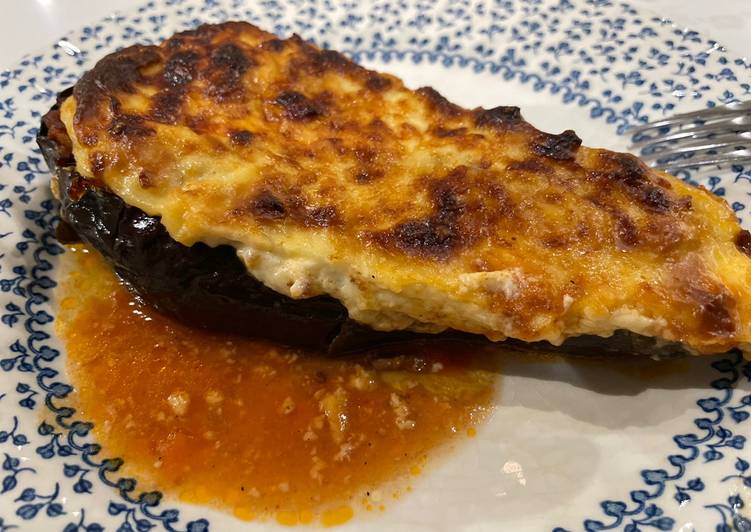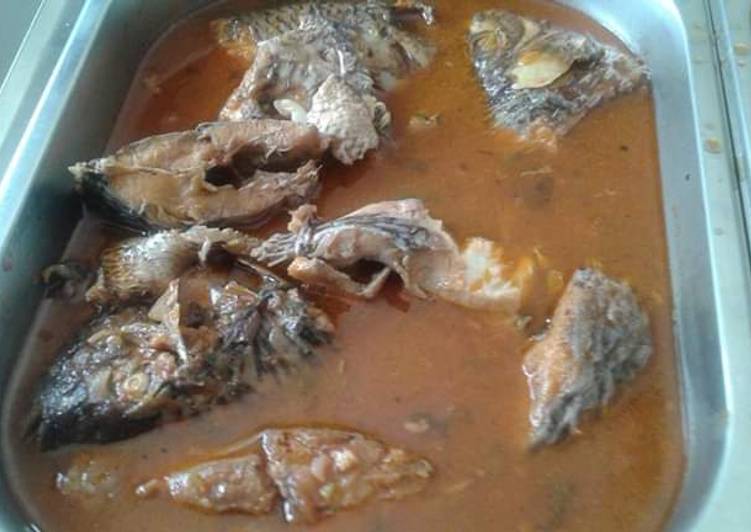
Hello everybody, I hope you are having an amazing day today. Today, we’re going to make a distinctive dish, papoutsakia. It is one of my favorites. For mine, I am going to make it a bit tasty. This is gonna smell and look delicious.
Papoutsakia is one of the most popular of current trending foods in the world. It is enjoyed by millions daily. It’s easy, it’s quick, it tastes yummy. Papoutsakia is something that I’ve loved my entire life. They’re fine and they look fantastic.
'Melitzanes papoutsakia' (Greek stuffed eggplant) is a Greek dish which receives its name from the To prepare this delicious Greek stuffed eggplant dish ('melitzanes papoutsakia' recipe), the. Greek baked stuffed eggplants - Papoutsakia by Greek chef Akis Petretzikis. An authentic Greek recipe for eggplants filled with ground meat and bechamel sauce! I called it the "lazy papoutsakia" and I serve it when I am too bored to make the béchamel sauce.
To begin with this particular recipe, we must first prepare a few components. You can have papoutsakia using 23 ingredients and 7 steps. Here is how you cook that.
The ingredients needed to make Papoutsakia:
- Get 4 aubergines
- Take Cheese, grated
- Get Mince
- Prepare 500 g mince
- Get 1 onion
- Prepare 2 cloves garlic
- Take 1 can chopped tomatoes
- Take 1 tbsp tomato purée
- Get 1 carrot, grated
- Take 1 bay leaf
- Prepare 1/2 stick cinnamon
- Prepare 60 ml brandy
- Take White sauce
- Make ready 600 ml milk
- Make ready 40 g flour
- Get 40 g butter
- Make ready 1 egg
- Prepare Salt
- Get Tomato sauce
- Make ready Water
- Take 250 g passata
- Make ready Olive oil
- Get Salt and pepper
These stuffed eggplants are one of the many ladera. See more ideas about Πλεκτά, Βελονάκι, Πλέξιμο. Eggplant Papucaki (Turkish: Patlıcan papucaki) is a typical Aegean dish found on both Turkish and Greek sides of the Aegean Sea. "Papuc" or "papuç" is a Persian word "paposh" (پاپٯش) that is used in Turkish and means shoe or slipper. Find papoutsakia stock images in HD and millions of other royalty-free stock photos, illustrations and vectors in the Shutterstock collection.
Instructions to make Papoutsakia:
- Cut in the aubergines in half, leaving the top stark attached. Score flesh in a diamond pattern, put oil and salt on top then cook at 200oC for 30min
- For the mince, brown the mince in a pan then add the onions and garlic. Cook for 5min
- Add tomato purée, brandy, cinnamon stick, sugar, bay leaf, carrots and chopped tomatos. Season with salt and pepper. Put the lid on the pan and simmer on low heat for 30min. Remove cinnamon after 5min
- For the white sauce, put the butter, flour and milk in a sauce pan, heat and stir continuously until thicken. Take of the heat, add the egg and stir in.
- To assemble, in an oven proof dish, lightly mash the aubergine flesh with a spoon and make a crater for the mince. Add the mince then white sauce and finally the grated cheese on top.
- For the tomato sauce, mix the passata, oil and water. Pour into the dish so it surrounds the aubergines but doesn’t go on the top of them.
- Cook at 200oC for 40min
Eggplant Papucaki (Turkish: Patlıcan papucaki) is a typical Aegean dish found on both Turkish and Greek sides of the Aegean Sea. "Papuc" or "papuç" is a Persian word "paposh" (پاپٯش) that is used in Turkish and means shoe or slipper. Find papoutsakia stock images in HD and millions of other royalty-free stock photos, illustrations and vectors in the Shutterstock collection. Thousands of new, high-quality pictures added every day. Add two cloves of garlic, medium onion and parsley to olive oil in a medium sauce pan. See how to make Papootsakia in a fun way with EllinikesSintages and enjoy!
So that’s going to wrap this up for this exceptional food papoutsakia recipe. Thanks so much for reading. I’m sure you can make this at home. There is gonna be interesting food at home recipes coming up. Remember to bookmark this page on your browser, and share it to your loved ones, colleague and friends. Thanks again for reading. Go on get cooking!


